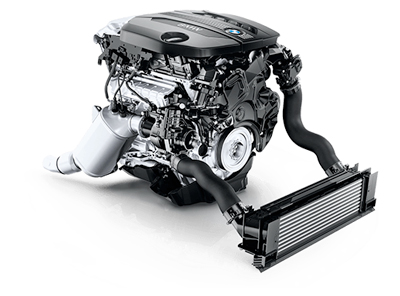Typical Problems Dealt With by BMW Engine Owners and Just How to Fix Them
Typical Problems Dealt With by BMW Engine Owners and Just How to Fix Them
Blog Article
Exploring the Development of Combustion Engines in Modern Transportation Solutions
As we browse the landscape of contemporary transportation, the advancement of burning engines stands as a testimony to human resourcefulness and design expertise. From their simple starts to the advanced powerhouses pushing vehicles today, combustion engines have undergone a remarkable journey of innovation and adjustment. Recognizing the details of this advancement not just drops light on the past yet additionally leads the means for imagining what exists ahead in the realm of transport modern technology. The interaction of background, modern technology, and ecological worries fit the trajectory of combustion engines creates a story that is both engaging and insightful.
Early Beginnings of Combustion Engines
Exactly how did the concept of burning engines first arise in the very early stages of transport advancement? When the concepts of internal combustion were first discovered, the roots of combustion engines can be traced back to the 17th century. In 1673, Christian Huygens conceptualized a basic inner combustion engine that made use of gunpowder to generate power. It had not been till the late 19th century that sensible applications of combustion engines in transportation started to arise.
The development minute featured the innovation of the first effective gasoline-powered engine by Karl Benz in 1885 - bmw engine. This engine led the way for the advancement of the modern-day auto, revolutionizing transportation systems worldwide. Succeeding technologies by Nikolaus Otto and Gottlieb Daimler even more fine-tuned burning engine modern technology, resulting in the mass production of autos and the quick growth of the transport market
These very early burning engines were defined by their simpleness and performance, laying the structure for the facility and effective engines made use of in modern-day transport systems. The development of burning engines has been important in shaping the way we travel and transfer goods, marking a significant milestone in the background of transport growth.
Shift to Internal Combustion Technology
The change to inner combustion technology marked a crucial change in the development of transportation systems. This change started in the late 19th century, with innovators like Nikolaus Otto and Gottlieb Daimler establishing the first effective interior combustion engines. These engines transformed transportation by supplying a much more effective and effective choice to heavy steam engines and electric motors.
Among the crucial advantages of internal burning engines was their ability to be reduced to suit vehicles, bring about the advancement of motorbikes and automobiles. This shift from cumbersome, stationary engines to portable, mobile ones paved the means for the contemporary transport systems we see today.
The shift to internal combustion technology also spurred developments in gas technology, causing the development of gas and diesel as key fuel sources for vehicles. This change not only made transport much more obtainable to the masses yet likewise laid the structure for the oil and gas market to come to be essential to worldwide economies.
Effect of Combustion Engines on Transportation
The adoption of burning engines in transport systems catalyzed an extensive change in the efficiency and speed of international mobility. Combustion engines changed transportation by offering a trusted and flexible source of power for different automobiles, consisting of cars, planes, vehicles, and ships. This technology significantly enhanced the ability for goods and individuals to conform fars away in shorter amount of time, resulting in boosted connection in between regions and nations.
Moreover, the extensive use burning engines has actually had a substantial effect on financial growth. The capacity to move items successfully has actually stimulated profession and commerce, enabling companies to expand their markets and reach customers worldwide. This has actually promoted financial growth and globalization, as products can now be moved much faster and in bigger amounts than ever.
However, the environmental influence of burning engines can not be ignored. The combustion of fossil fuels has actually led to air pollution and greenhouse gas exhausts, contributing to climate change and posing wellness dangers to populations. bmw engine. Therefore, there is an expanding emphasis on creating different propulsion innovations to reduce these adverse impacts and create an extra sustainable future for transportation
Technologies in Combustion Engine Design
One notable development is the development of turbocharged engines, which use exhaust gases to drive a turbine that presses incoming air, permitting for more gas to be scorched, resulting in increased power output without a considerable rise in engine dimension. Variable valve advice timing systems have additionally reinvented engine layout by enhancing air flow at different engine speeds, boosting both power and performance. These technologies collectively contribute to the continuous renovation of burning engines in contemporary transportation systems.
Future Trends in Burning Engine Development
With modern technology developments driving constant technology, the future of burning engine advancement is poised to revolutionize transport systems internationally. One of the vital trends in burning engine advancement is the push in the direction of higher performance and minimized discharges. Manufacturers are spending heavily in r & d to improve engine performance while fulfilling rigid environmental laws. This includes the assimilation of sophisticated gas injection systems, boosted turbocharging techniques, and the usage of lightweight materials to maximize fuel intake and decrease carbon exhausts.
One more famous trend is the adoption of hybrid modern technologies in combustion engines. Hybrid engines integrate typical combustion innovation with electrical power, supplying improved fuel effectiveness and lower exhausts. As the automotive sector changes towards electrification, hybrid burning engines are viewed as a transitional solution that connects the space in between traditional lorries and fully electrical ones.
Furthermore, the assimilation of clever technologies, such as expert system and data analytics, is anticipated to play a substantial duty in the future of burning engine growth. These modern technologies can optimize engine performance in real-time, leading to more efficient combustion processes and enhanced total vehicle efficiency. Embracing these future trends will not just drive innovation in burning engine growth yet additionally add to a much more lasting and environmentally pleasant transportation community.

Conclusion
In final thought, the development of combustion engines in modern-day transport systems has been noted by considerable improvements in blog here innovation and design. From the very early beginnings of combustion engines to the change to interior combustion modern technology, these engines have actually had see this website a profound influence on transportation.
The roots of burning engines can be traced back to the 17th century when the concepts of interior combustion were initial checked out. These engines transformed transport by using a more reliable and powerful alternative to heavy steam engines and electric motors.

Report this page